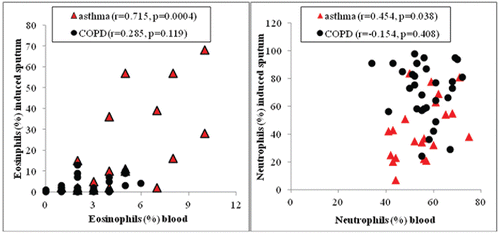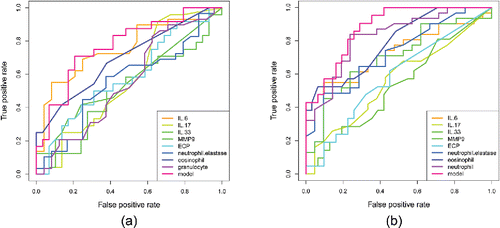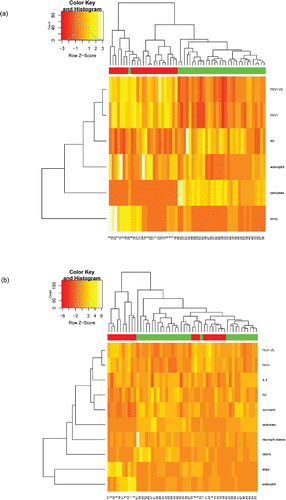Figures & data
Table 1. Clinical characteristics of patients with asthma and chronic obstructive pulmonary disease participating in the study.
Table 2. Mediator concentrations and cell numbers in serum/blood and induced sputum from asthma and COPD patients.
Figure 1. Correlations between blood and sputum eosinophils (red triangles) and blood and sputum neutrophils (black circles) in asthma and COPD patients.

Figure 2. Receiver operating characteristic (ROC) curve analysis of the diagnostic accuracy of different blood/serum (a) and induced sputum (b) biomarkers (IL-6, IL-17, IL-33, MMP-9, ECP, NE, eosinophil and neutrophil percentages and combined model) in the differentiation between asthma and COPD.

Figure 3. Hierarchical clustering of asthma and COPD patients. Single set of clinical and laboratory data per one patient was used for clustering. (a) Patients clustered according to peripheral blood eosinophil percentage, FEV1%, FEV1/VC, RV%, pack-years, and atopy. (b) Patients clustered according to data from sputum samples (eosinophil and neutrophil percentages, IL-6, NE and MMP-9 concentrations) and clinical data (FEV1/VC, FEV1%, RV%, pack-years, and atopy status). Patient IDs are given at the bottom of the plot. The color scale codes the value of a variable with the brightest shade corresponding to the highest value.

